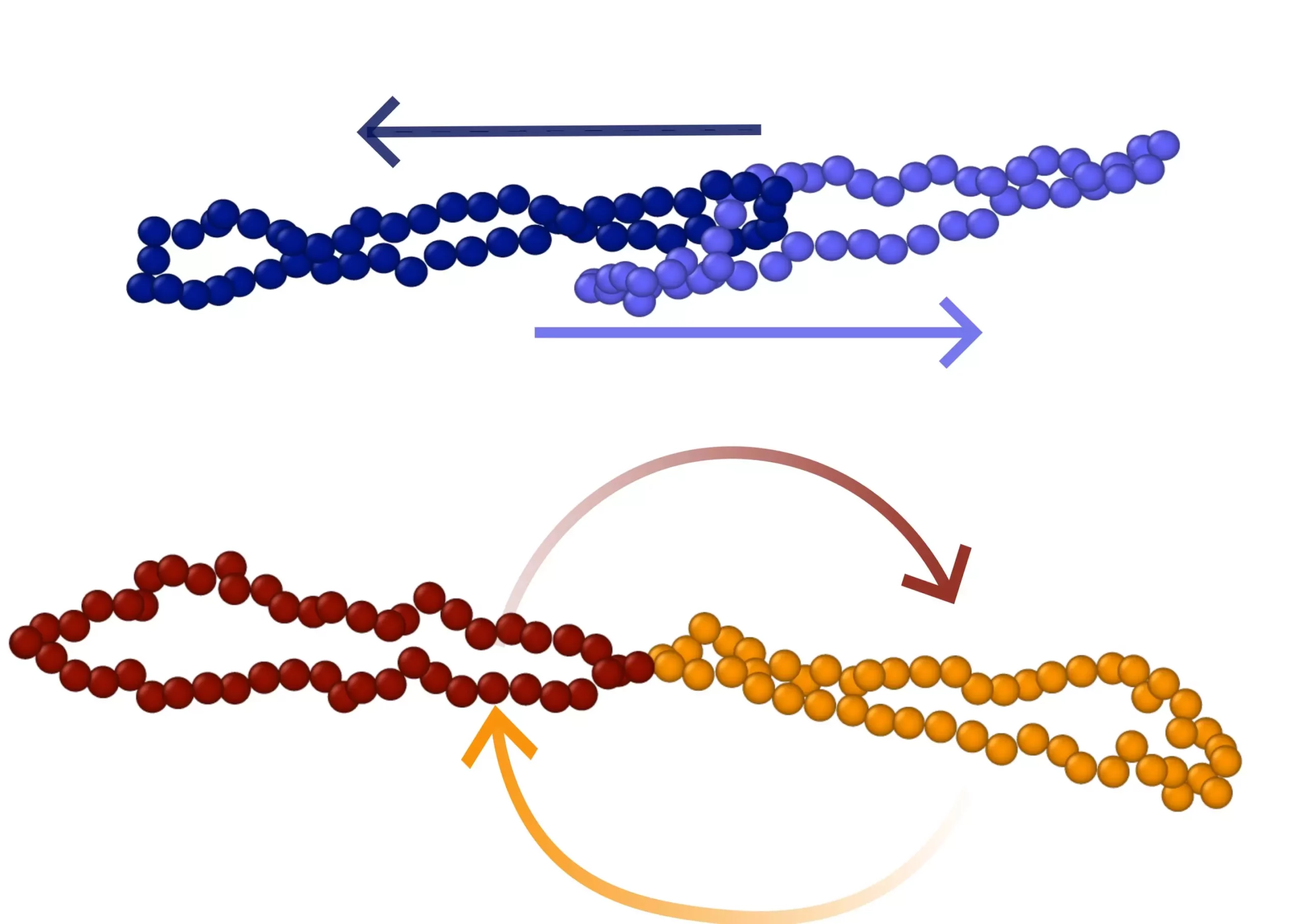The concept of fluids shearing, characterized by the sliding of fluid layers under shear forces, plays a vital role in nature and rheology, the study of flow behavior of matter. Shear forces involve lateral forces applied parallel to a material, leading to deformation or slippage between layers. Understanding fluid shear properties, such as viscosity and thixotropy, is crucial in various fields, from industrial processes to medicine.
Recent research has introduced a novel approach by considering polymer topology, focusing on the spatial arrangement and structure of molecules, particularly ring polymers. Ring polymers are macromolecules with repeating units forming closed loops without free ends. Computer simulation experiments under shear were conducted using two types of connected ring pairs: bonded rings (BRs) with chemical linkages and polycatenanes (PCs) with mechanical linkages via a Hopf link.
The study revealed unexpected dynamic patterns in BRs and PCs, known as gradient-tumbling and slip-tumbling. BR molecules exhibit continuous gradient-tumbling motion under shear, while PCs maintain a fixed, stretched, and non-tumbling conformation. PCs display intermittent dynamics with occasional exchange of rings, termed slip-tumbling. These unique motions highlight the interplay between hydrodynamics and polymer architecture.
Impact on Mechanical Properties
The different tumbling motions and structures of BRs and PCs were found to influence the shear viscosity of solutions. BRs release internal stresses by tumbling, reducing viscosity, whereas PCs store stresses permanently, resulting in higher viscosity. This observation suggests that polymer topology can significantly impact a fluid’s resistance to flow under shear, reflecting internal friction and deformability.
Further experimental and theoretical studies are essential to investigate the hypothesis that the distinct dynamics of BRs and PCs affect shear viscosity in highly concentrated solutions or polymer melts. The collaborative effort between the University of Vienna, the Sharif University of Technology in Iran, and the International School of Advanced Studies (SISSA) in Italy paved the way for innovative research in this field.
Overall, the study sheds light on the intricate relationship between polymer topology and fluid shearing dynamics, emphasizing the need for a deeper understanding of these interactions for various applications. The unexpected patterns observed in ring polymers open up new avenues for exploring the influence of molecular structure on rheological properties, offering insights into the behavior of complex fluids under shear forces.


Leave a Reply